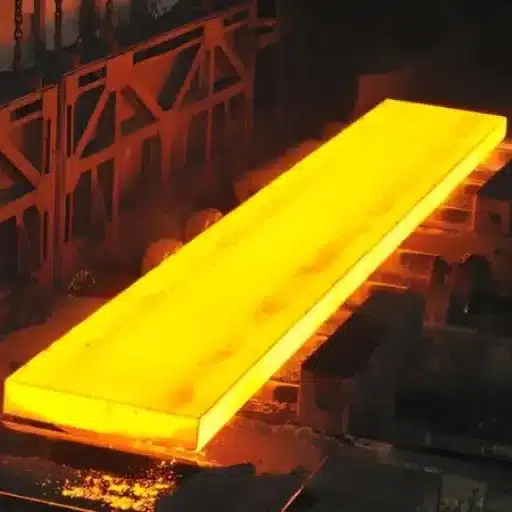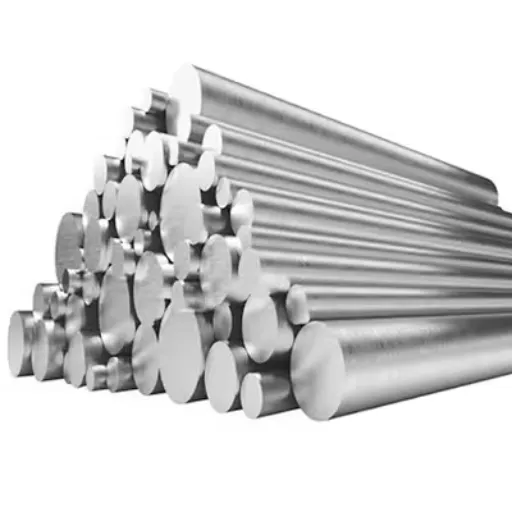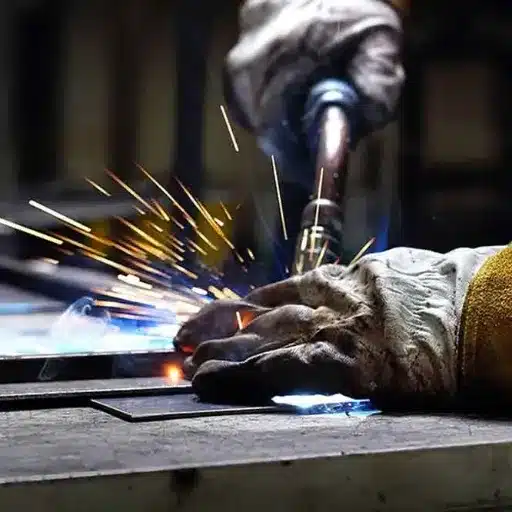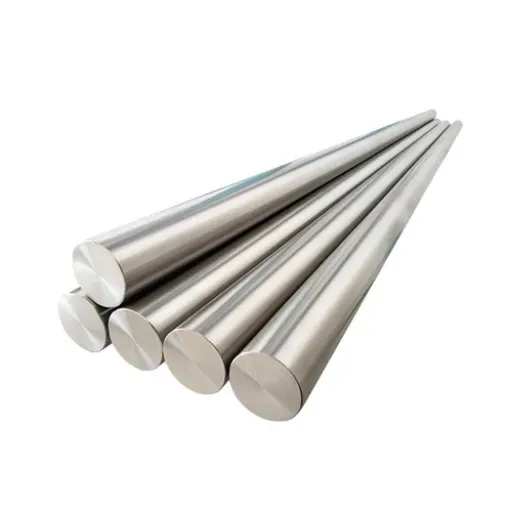Having knowledge of the melting points of metals is of paramount importance for a vast multitude of industries, from manufacturing ones to that of crafting. Steel, in particular, presents an intriguing query because of its immense commercialization for construction, automotive, and tool production. The melting point of steel is explored in detail in this treatise, highlighting aspects like temperature details of the range of steel types, scientific rationale for their formation, and practical business applications that depend on melting temperature. Thus, metallurgists, engineers, and even those with an interest in what happens to steel at extreme heat may find their knowledge deepened for this indispensable material while following further through the temperatures that make steel versatile and strong.
Steel Melting Points Quick Reference
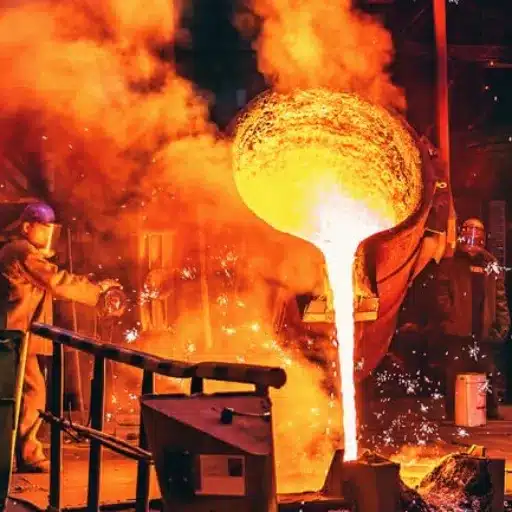
| Steel Type | Melting Point (°F) | Melting Point (°C) | Common Applications |
|---|---|---|---|
| Low Carbon Steel | 2,500°F | 1,370°C | Construction, Automotive |
| Carbon Steel | 2,597-2,804°F | 1,425-1,540°C | General Manufacturing |
| Stainless Steel | 2,500-2,750°F | 1,370-1,510°C | Corrosion-Resistant Applications |
| Pure Iron | 2,800°F | 1,538°C | Reference Material |
The Science of Steel Melting
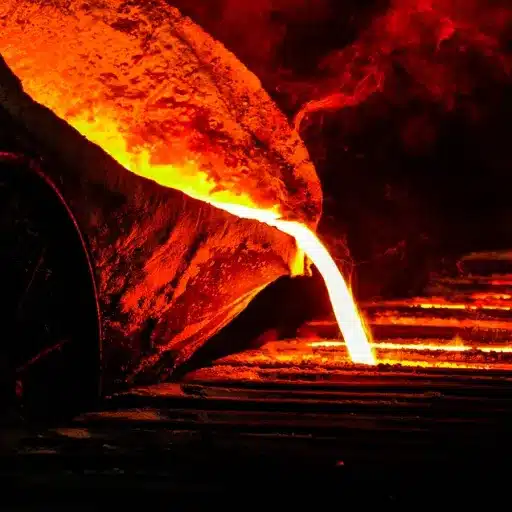
The exact melting temperature of steel depends on its composition but is usually considered in the range of 2,500°F (1,370°C) to 2,800°F (1,540°C). Elements such as carbon and other alloying agents slightly vary this range, depending upon their concentrations.
Understanding the Melting Point of Steel
The melting point of steel varies with its composition because steel is an alloy with iron as the primary constituent and carbon, along with other elements, varying according to grade. Generally speaking, the melting point of pure iron is assumed to be around 2,800°F (1,538°C). The presence of carbon and the so-called alloying elements causes the melting range of steel to be approximately 2,300°F (1,260°C) to 2,500°F (1,370°C).
The quantity of carbon, in fact, greatly influences the steel melting temperature. For example, low carbon steels, usually for construction and automotive purposes, melt closer to about 2,500°F (1,370°C). The melting points of medium and high carbon steels tend to be slightly decreased relative to the low carbon varieties, as carbon interferes with bonding within the iron matrix. Furthermore, stainless steels, which contain chromium and nickel, melt from approximately 2,500°F (1,370°C) to 2,750°F (1,510°C).
How Temperature Governs Steel Melting
Melting by temperature depends on steel constitution and the conditions under which it is applied. The steel is not a pure metal, rather an alloy primarily composed of iron with carbon and other varying elements such as manganese, nickel, and chromium. Different concentrations of these alloying constituents drastically influence the melting range of steel.
At high temperatures, steel undergoes a series of transformations before going into melting. For example, during heating, the microstructure of the steel changes, which will influence its mechanical properties such as strength and ductility. Phase transformation generally occurs when the temperature exceeds the critical temperature (generally estimated to be around 1,300°F to 1,600°F, the exact value varies according to the type of steel), where the steel forms new phases, such as austenite. Else, exposure to higher temperatures but below melting would cause scale formation, oxidation, or loss of hardness if not controlled properly.
Factors Affecting Steel’s Melting Temperature
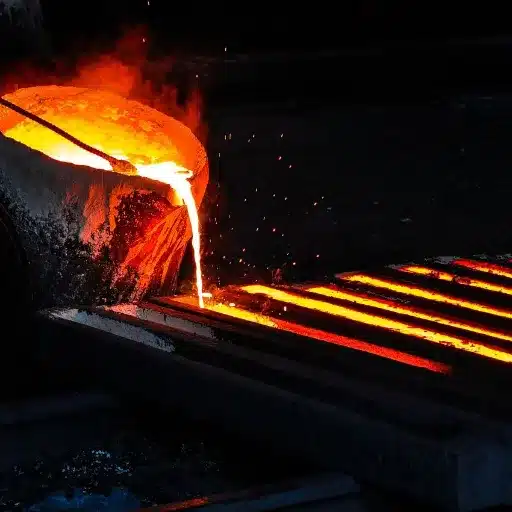
From the perspective of melt phenomena, I would try to consider chemical composition, especially carbon content and alloying elements like nickel, chromium, or manganese. Depending upon the quantities, these elements could either raise or lower the melting point. Aside from that, the purity of the steel also influences melting behavior, as do environmental factors, such as pressure.
Alloys and Their Influence on the Melting Point
The addition of various alloying elements greatly influence the melting point of steel and all other materials. Each element imparts properties that tailor a material to specific applications. There are some common alloying elements usually found and their effects:
| Element | Symbol | Melting Range (°C) | Primary Effects |
|---|---|---|---|
| Carbon | C | 1,425-1,540 | Lower melting point, higher hardness and tensile strength |
| Chromium | Cr | 1,400-1,500 | Increases corrosion resistance, slightly lowers melting range |
| Nickel | Ni | 1,350-1,450 | Improves toughness and ductility |
| Manganese | Mn | 1,400-1,450 | Improves wear resistance and tensile strength |
| Silicon | Si | 1,400-1,450 | Increases strength, oxidation resistance, and machinability |
External Conditions That Affect Melting

Different materials, characterized by their inherent properties, display different kinds of melting behavior that can be disordered by external conditions. Depending on the circumstances, external situations such as pressure, impurities, or ambiance can either increase or decrease the melting point of a material. Consideration of these variables is essential in industries that require precision and performance.
1. Influence of Pressure
At high pressure, the melting temperature of most materials would increase. This is attributed to the fact that under high pressure, atoms are forced closer together and more energy is required to overcome the forces bonding them to be in solid state, thus turning them into liquid. For example, the melting temperature of ice increases with an increase in pressure, which happens to be important in glaciology and cryospheric studies.
2. Impurities and Alloying
Generally, the presence of impurities would lower the melting temperatures of materials; hence this phenomenon is called melting point depression. For example, salt lowers the melting temperature of ice, which is why salt is placed on roads during winter to de-ice them. In metallurgy, however, impurity elements are generally added intentionally as alloying elements to alter the melting point along with other properties of the base metals for particular applications.
3. Rapid Rates of Heating and Cooling
Heating and cooling rates can also influence melting behavior. Rates that change suddenly tend to lead to heat being excluded unevenly. Under such conditions, such behavior may sometimes contribute to partial melting or increased structural weakness.
Average and Specific Melting Point of Steel
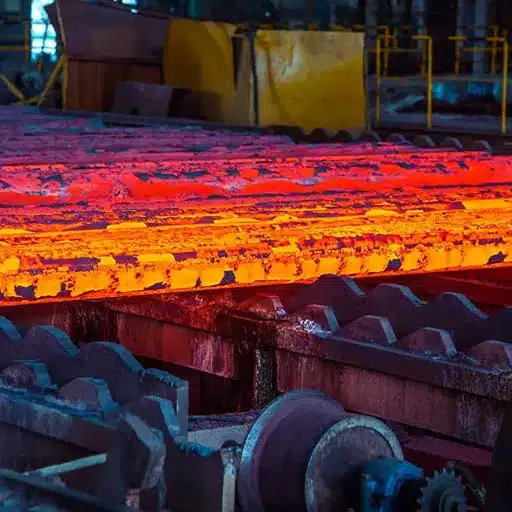
Average Steel Melting Point
*This average depends on the given steel alloy composition
One may say that the average melting point of steel is about 2,500°F (1,370°C) but this would depend on the given steel alloy composition. The melting range can be narrowed or widened by either increasing or decreasing the content of carbon, chromium, nickel, and other substances to adapt steel’s properties for various uses in different industrial fields.
Lowest and Highest Melting Points of Metals
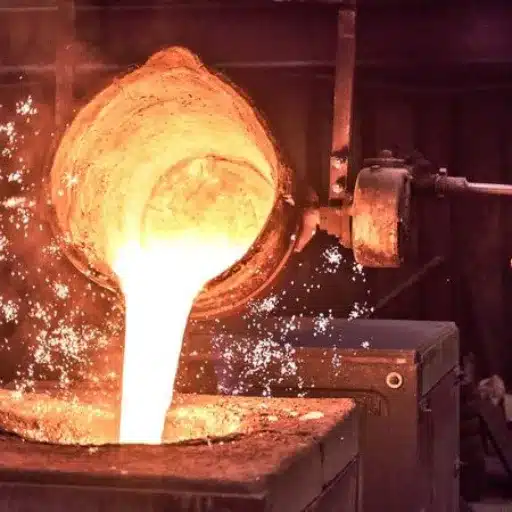
Lowest Melting Point
Mercury
Liquid at room temperature
Highest Melting Point
Tungsten
Used in extreme heat applications
Being aware of these extremes is paramount in selecting materials in specialized industries. For example, metals with lower melting points tend to be used in soldering and chemical processes, while those with higher melting points find favored uses for heavy thermal application. This knowledge ensures that materials can cater to strict engineering specifications.
Steel Melting Point: Real-World Applications
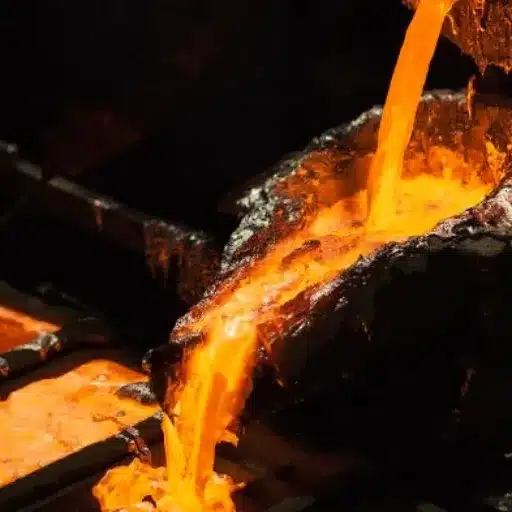
With a melting point occurring at 2500°F (1370°C), steel finds applications in all spheres of industry. Thermally, it can bear very high temperatures, making it eminently suitable for applications requiring strength and re-actuation under heat stress.
🏗️ Construction
Steel is employed widely; construction and erection of buildings and industrial plants, application-building steels for skyscrapers, variably composed for welding and high heat treatment above 1500°F.
🚗 Auto & Aerospace
High-strength steel alloys are seamed: Engine parts, exhaust systems, rocket fuselages, etc. Advanced high-strength steels (AHSS) used in the automotive industry allow for faster fuel consumption and safety while handling thermal stress as well.
⚡ Power Generation
Steel is seriously required in heat-producing plants, providing turbines, boilers, and pipelines for heavy working environments. Heat-resistant steel, such as chromium-molybdenum alloys, is widely employed in coal-fired power plants and nuclear power plants for resisting material failure under consuming thermal load.
🔧 Tool Making
Tool steels, which are further alloyed with tungsten and molybdenum, provide excellent hardness to resist heat. These steels provide cutting tools, mold, and dies that maintain performance above 1000°F.
Applications in Industry
One could say that the applications of steels in the industrial domain are almost infinite. These steels find their uses in construction, automobile manufacturing, power plants, and equipment making, being selected for their strength and ability to withstand heat and conditions of very high magnitude. Steels such as chromium-molybdenum alloy steels and tool steels thus hold an important place by granting these environments both durability and performance at a very high level.
Innovations in Steel Production and Melting
In the past few years, great attention has been paid to improvements in steel production and melting techniques so as to cater to efficient, sustainable, and performance standards. One of the advancements encompasses the working of electric arc furnaces, which now represent over 30% of the world’s total steel production. These furnaces mainly use scrap steel as an input, thereby reducing dependence on virgin raw materials, and in this way, lowering carbon emissions. The World Steel Association states that the EAF method can reduce up to 75% of CO2 emissions when compared to the conventional blast furnace method.
- Electric Arc Furnaces: 30% of global steel production, 75% CO2 reduction
- Hydrogen-based DRI: Up to 95% CO2 emission reduction
- Advanced Steels: Duplex stainless steel and AHSS with superior properties
The rise in exclusion rates for hydrogen-based direct reduced iron (DRI) technology is yet another development. This process replaces carbon-intensive coke with hydrogen and results in enormous greenhouse gas reductions. For instance, pilot projects executed by ArcelorMittal and SSAB have demonstrated the capacity of cutting down CO2 emissions by up to 95% in steelmaking processes. In addition, the resultant alloying techniques have aided the recent emergence of high-performance steels like duplex stainless steel and advanced high-strength steels (AHSS). Such steels are characterized by a very high strength-to-weight ratio and outstanding corrosion resistance, which complies with the ever-growing demand from industries like automotive and renewable energy.
Reference Sources
-
SteelPro Group
- Title: What Temperature Does Steel Melt?
- URL: https://steelprogroup.com/manufacturing/property-1/melting-point/
- This source provides detailed information about the melting points of steel based on its composition, making it a credible reference for understanding steel’s thermal properties.
-
Metal Supermarkets
- Title: The Melting Points of Metals
- URL: https://www.metalsupermarkets.com/melting-points-of-metals/
- This site offers a comprehensive guide to the melting points of various metals, including steel, and is widely recognized in the metalworking industry.
-
Online Metals
- Title: Melting Points of Metals
- URL: https://www.onlinemetals.com/en/melting-points?srsltid=AfmBOoq85WmNwcc3KbAkFb_jTY6AlCbnKYXzU_psqjcIato8CBiVmKPc
- This source provides accurate data on the melting points of steel and other metals, catering to both industrial and educational audiences.
Frequently Asked Questions (FAQs)
Conclusion
Understanding steel melting points is crucial for engineers, metallurgists, and industry professionals. From construction to aerospace applications, knowing how temperature affects steel behavior ensures optimal material selection and process control for superior results.

